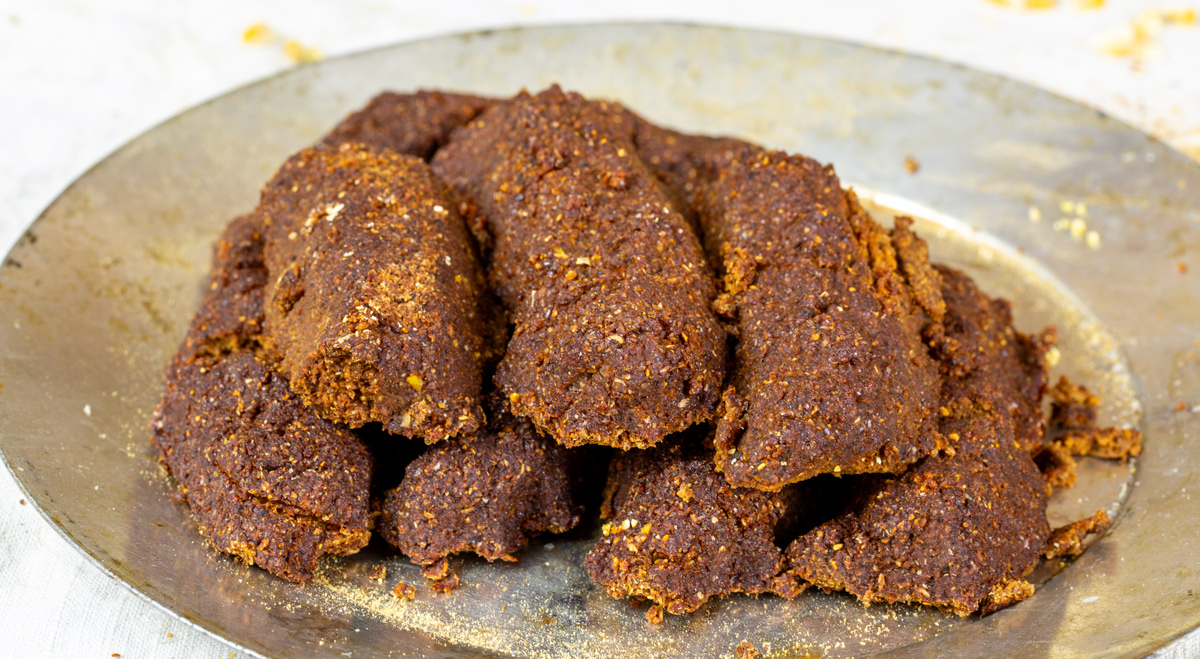Drouillard and three others return to Fort Mandan to tell of a Sioux ambush. They lost their horses and knives, but after gifting the Sioux some cornbread, they were given back one horse. The captains prepare a military response.
Clark in from the Cold
by Yellowstone Public Radio[1]Originally aired weekdays by Yellowstone Public Radio during the Bicentennial observance of 2003-2006. Narrated by Hal Hansen. Scripts by Whit Hansen and Ed Jacobson. Produced by Leni Holliman. © … Continue reading
Surprise Attack
The Savages rushed out of this piece of Woods, and Ran towards our four Men Whooping and Shouting as they came, (the Men not having finish’d watering their horses) there being near 120 of those Savages, they then surrounded our Men, and took away the three horses, but offered no Violence then to them
—Joseph Whitehouse
Cornbread Diplomacy
Native American Cornbread
© 2020 by Kristopher K. Townsend. Permission to use granted under the Creative Commons Attribution-Share Alike 4.0 International license.
This cornbread was made following a traditional Native American recipe. The corn was overly parched giving the small loaves their dark appearance.
One of these Savages returned back to one of our Men one of the horses, The Man to whom the Indian returned the horse gave that Indian some Corn bread, and divided another loaf of Corn bread, among them, giving their Chief that was with them a large Share.—
—Joseph Whitehouse
Life or Death Decision
These Savages took the two other horses, and two knives from them, they then formed a half-Circle round them and held a consultation, the result of which, was that they should be murder’d by their party; which would certainly have been the case; had not two of their Warriors opposed them, and would not agree to its being done, the Savages then set the four Men at liberty, to go to the fort
—Joseph Whitehouse
The Captains’ Response
The Officers immediately called on the party for 20 Volunteers, to off early in the Morning, in pursuit of those Robbers.— Twenty immediately of them volunteered their Service, and prepar’d themselves to be in readiness by day light.—
—Joseph Whitehouse
Weather Diary
State of the Ther. at rise
Weather Wind at rise
Thermt. at 4 oCk. P.M. Weather Wind at 4 oCk. P.M. River 2 [above 0] cloudy after snow N W 2 [below 0] fair N W The Snow fell 3 Inches deep last night
—Meriwether Lewis[2]To assist the reader, the editor of this web page has omitted the date column, merged the “State of the River atrise” columns, and spelled out some abbreviations.
Experience the Lewis and Clark Trail
The Lewis and Clark Trail Experience—our sister site at lewisandclark.travel—connects the world to people and places on the Lewis and Clark Trail.
Plan a trip related to February 14, 1805:

Fort Mandan is a High Potential Historic Site along the Lewis and Clark National Historic Trail managed by the U.S. National Park Service. The North Dakota Department of Parks and Recreation manages a modern reconstruction and the Lewis and Clark Interpretive Center located at US Hwy 83 and ND Hwy 200A.
Knife River Indian Villages National Historic Site is a High Potential Historic Site along the Lewis and Clark National Historic Trail managed by the U.S. National Park Service. A unit of the National Park System, the site is located at 564 County Road 37, one-half mile north of Stanton, North Dakota. It has exhibits, trails, and a visitor center.
Notes
| ↑1 | Originally aired weekdays by Yellowstone Public Radio during the Bicentennial observance of 2003-2006. Narrated by Hal Hansen. Scripts by Whit Hansen and Ed Jacobson. Produced by Leni Holliman. © 2003 by Yellowstone Public Radio. |
|---|---|
| ↑2 | To assist the reader, the editor of this web page has omitted the date column, merged the “State of the River at  rise” columns, and spelled out some abbreviations. rise” columns, and spelled out some abbreviations. |



